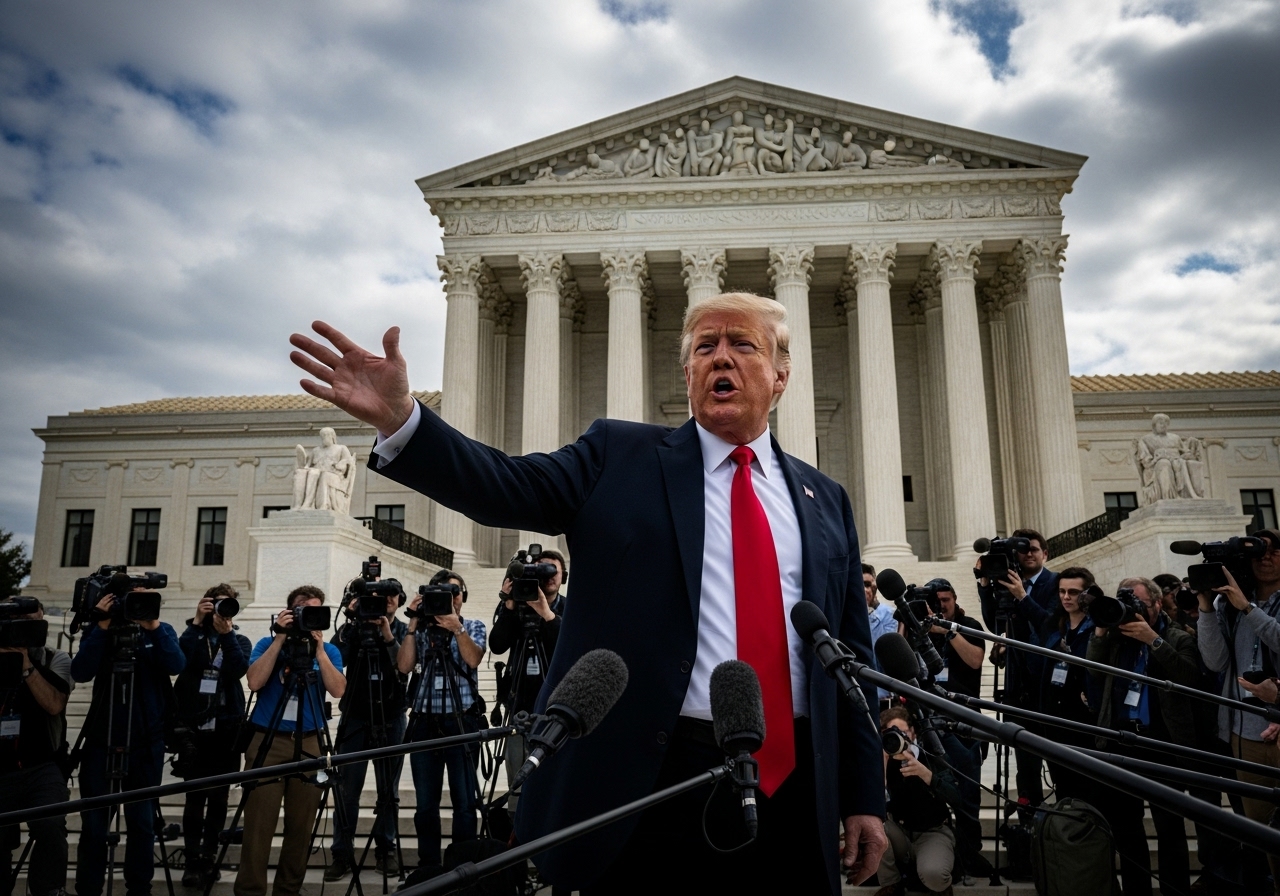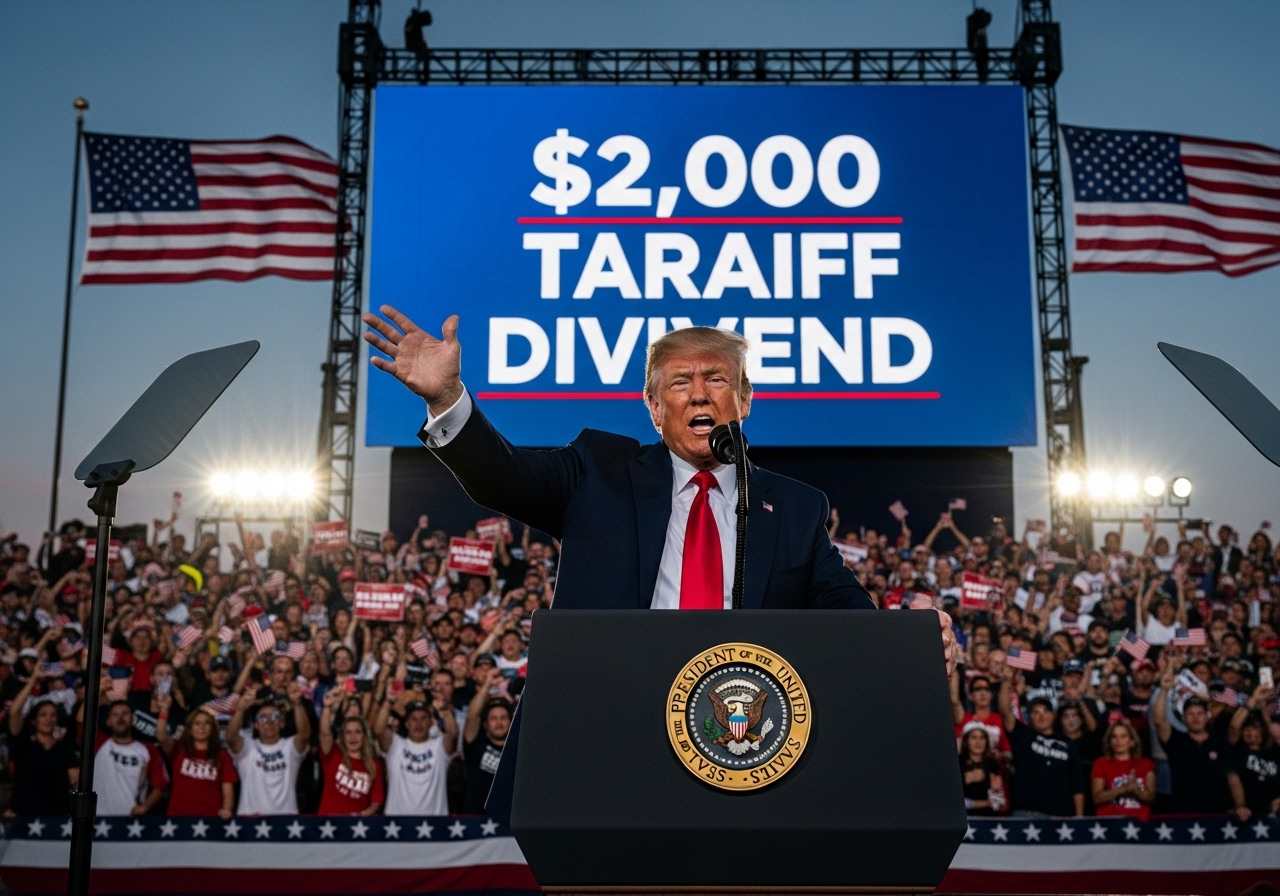President Donald Trump is warning that a new Supreme Court case could have massive effects on the U.S. economy and the power of the presidency. The case, *Trump v. V.O.S. Selections, Inc.*, is about whether the president can set tariffs under emergency powers without needing Congress to approve each one. Tariffs are taxes on goods brought into the country from other nations. Trump used tariffs during his first and current terms to protect American businesses and reduce reliance on foreign countries.
In 2025, the Trump administration introduced new “reciprocal tariffs,” meaning if another country taxes U.S. goods, America can tax theirs at the same rate. These tariffs have brought in a lot of money — more than $213 billion by September 2025 — and are expected to raise as much as $3 trillion over ten years. The money helps reduce the federal deficit, which is the gap between what the government spends and what it brings in. The Congressional Budget Office says these tariffs could cut the deficit by nearly $2.8 trillion over a decade.
But now the Supreme Court is hearing a case that could change everything. Lower courts have already ruled that Trump’s use of the International Emergency Economic Powers Act (IEEPA) to set tariffs may not be legal. They say the president does not have the authority to set broad, long-term tariffs without Congress giving clear permission. If the Supreme Court agrees, the government might have to pay back hundreds of billions — possibly trillions — in tariff money to importers. That would be a major change in how trade policy is handled and could shake up the economy.
President Trump has called this situation a “national security event.” He says reversing the tariffs would hurt American manufacturing, make the country more dependent on foreign goods, and damage national security. He also believes the Court may not have all the correct facts about how much money is at stake. In a post on Truth Social, Trump said the Court “was given the wrong numbers” and warned that a ruling against him could cause a $3 trillion economic “unwind.” That means businesses might cancel contracts, lose investments, or stop making plans based on the tariff system.
Trump sees tariffs not just as a tool for trade, but as a way to protect the country. He argues that under IEEPA, the president has the power to act during emergencies, including economic threats from unfair trade. By using tariffs, he says, the U.S. can respond quickly to issues like trade imbalances or foreign control of key industries, without waiting for Congress to pass new laws.
If the Supreme Court rules in Trump’s favor, it will confirm that the president can use emergency powers to set tariffs and respond to economic threats. This would give the executive branch more control over trade policy. But if the Court rules against him, it could limit the president’s power in future emergencies and return more authority to Congress.
The decision also has big political stakes. Trump has made trade a key part of his agenda, arguing that tough tariffs help American workers and businesses. Many of his supporters agree. But critics say tariffs can raise prices and hurt international trade. A ruling against Trump could give those critics a legal victory and force a major change in federal policy.
So far, studies show mixed results. A report from the Federal Reserve Bank of St. Louis found that tariffs haven’t raised consumer prices as much as some expected. That’s because businesses are waiting to see how long the tariffs last before changing prices. Still, some economists warn that long-term tariffs could slow economic growth and increase inflation.
In the end, the Supreme Court’s decision will not only affect trade but also shape how much power the president has in an emergency. The case could set a major legal precedent for years to come. For now, Trump is urging the Court and the public to understand the size of what’s at stake: trillions of dollars, national security, and the future of presidential power in times of crisis.





